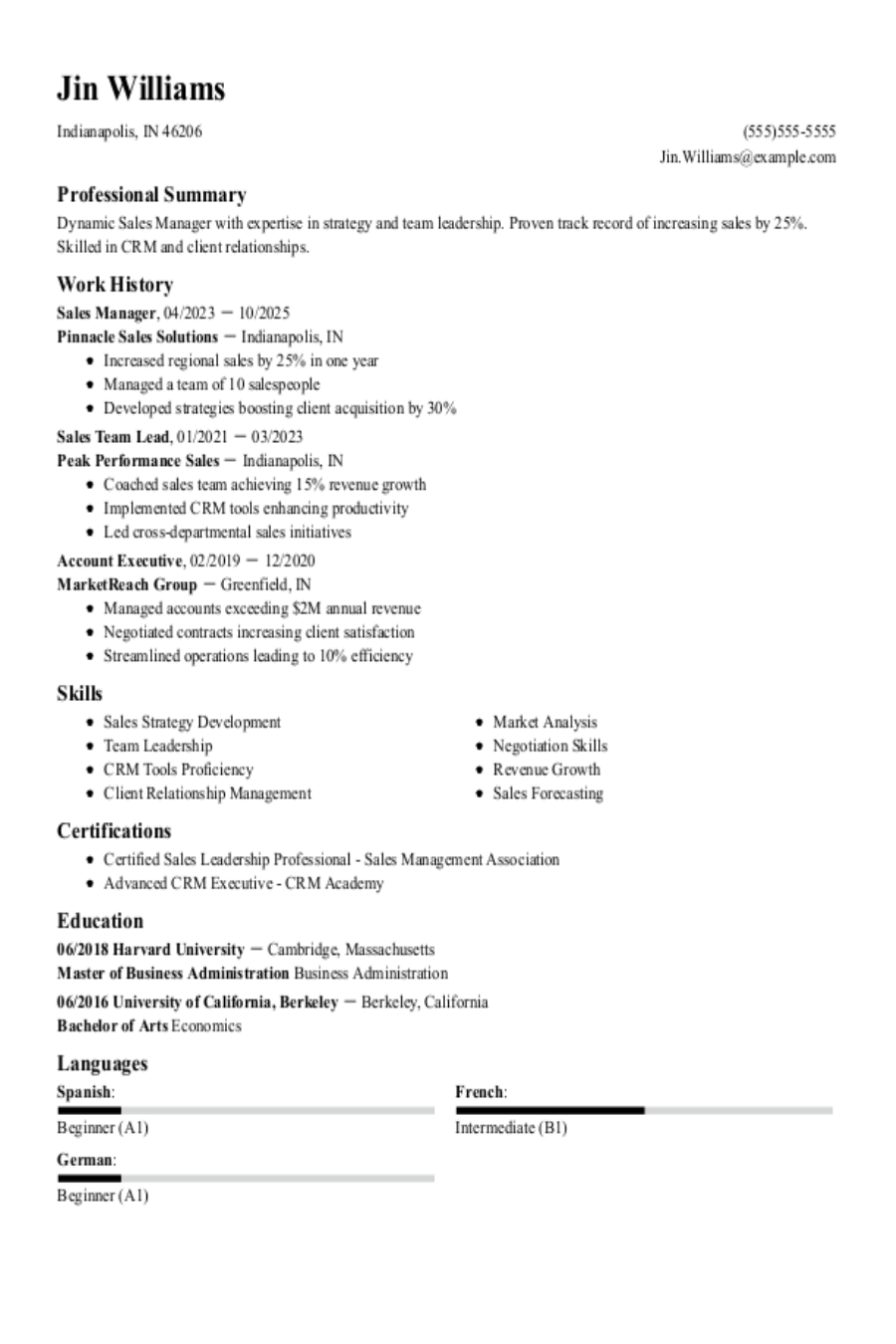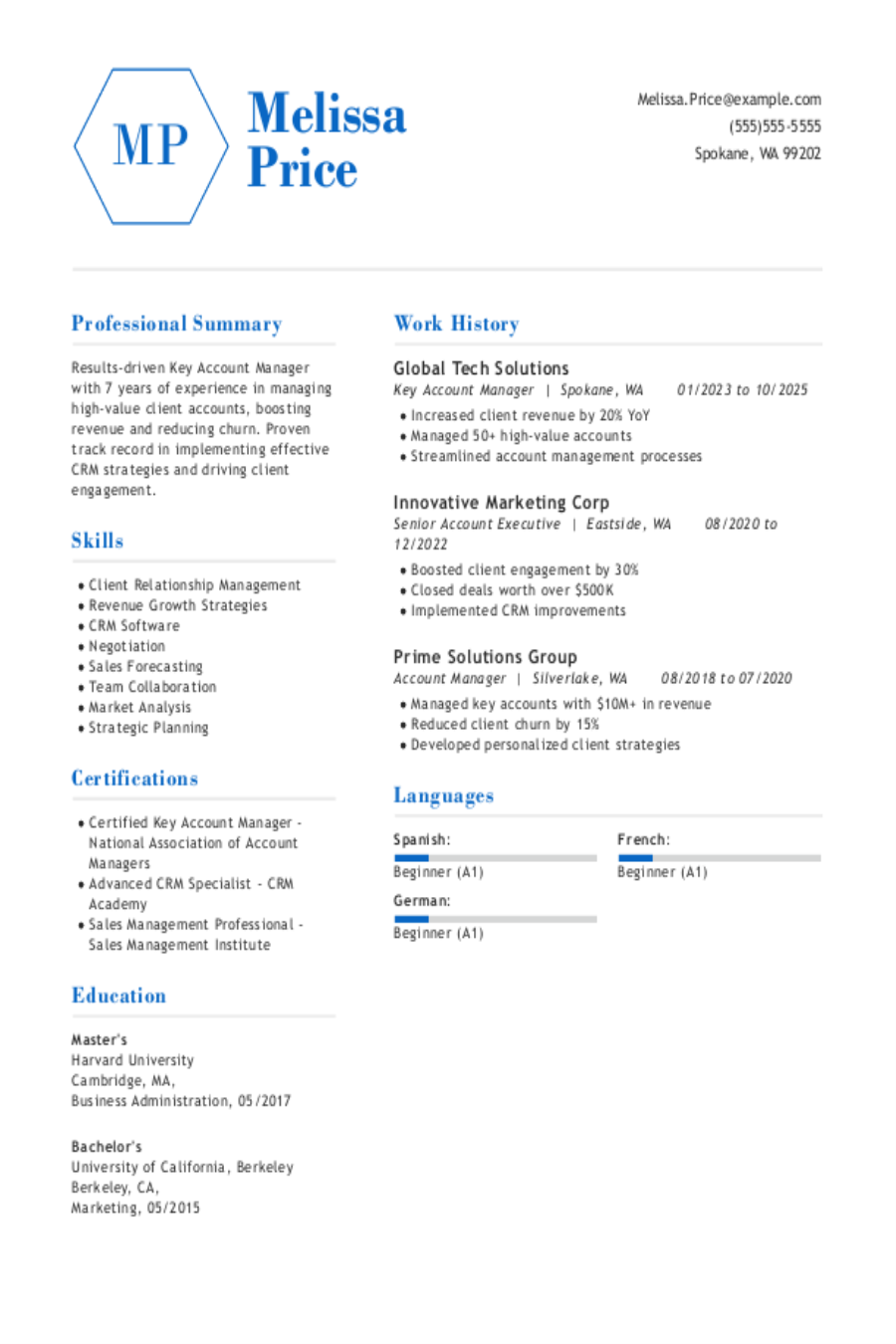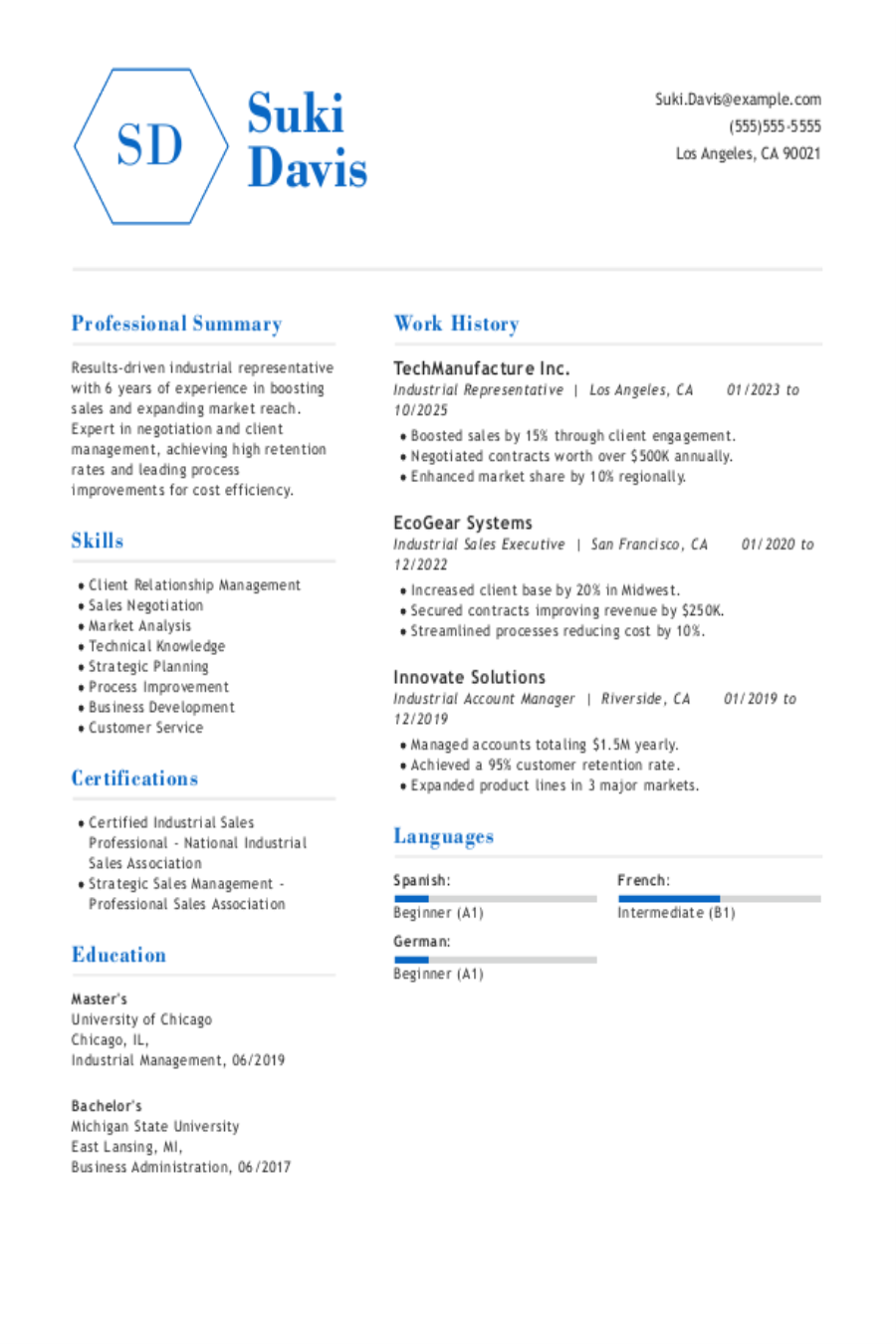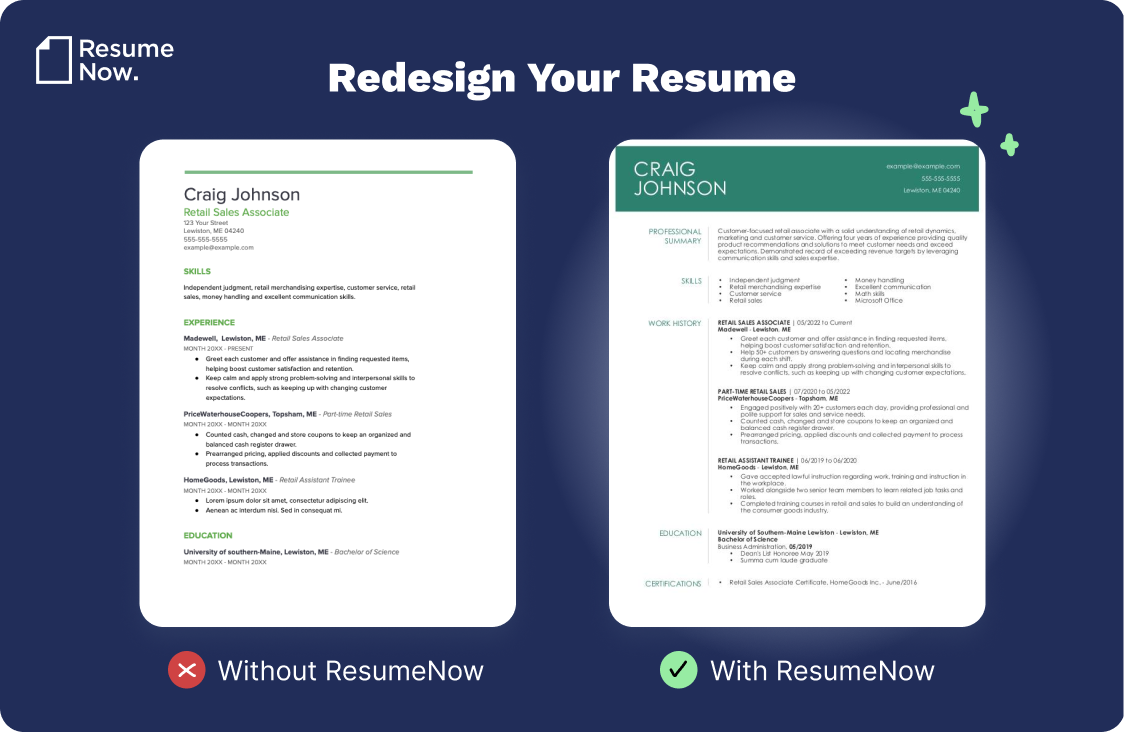You want to serve your country as a government employee, but you’ve heard that creating a federal resume is tricky. You have two choices: Abandon your dreams or follow this simple guide to writing a federal government resume!
While a federal resume does have more detail and some different elements than a conventional resume, it isn’t difficult to create one once you know what to do.
Here you’ll find:
- The definition of a federal resume.
- Our top federal resume templates including free downloadable templates.
- The key differences between a federal resume and a conventional resume.
- A selection of federal resume examples for inspiration.
- Detailed instructions on how to write a government resume.
- Additional resources for writing a federal resume.
- Key takeaways as you begin your job search.
Ready to make your resume right now? Head directly to our AI Resume Builder. There, you can choose a design of your liking and get advice and easy-to-edit, auto-generated text for every resume section.
Federal resume example
What makes this federal resume example strong?
- Neat style
This resume uses a neat and stylish template that showcases the candidate’s polish.
- Emphasis on capability
This candidate shows she can handle the unique responsibilities and expectations of the role by detailing her skills and experience.
- Active language
Putting her experience in active terms positions this candidate as a direct and enthusiastic worker who takes ownership of her accomplishments.
The best way to learn how to write a resume is by studying a federal resume example. Whether you’re looking for a senior leadership position or are just entering the workforce, resume examples like the one above should help you get started on your resume with confidence.
What is a federal resume?
If you’re interested in a government job, you’ve probably heard about federal resumes. Something along the lines of: “They can be tricky to create because they have additional requirements that don’t apply to the average resume.”
As the name suggests, a federal resume is a comprehensive document used to apply for government jobs, specifically in the federal government. And they do contain information about you that would not typically appear in a regular resume, such as school transcripts or information about past military service. For this reason, federal resumes are longer than conventional resumes.
Learning to write a resume for a federal position is important if you want to land the interview, and it’s actually simple to do with the proper guidance. Read on to examine our federal resume templates and examples and learn more about how to write a federal resume in a few simple steps.
A great federal resume outline will always include the following:
- Your contact info in the header.
- A well-written, targeted resume profile.
- At least one — if not more! — sections for skills.
- A reverse-chronological list of work experience.
- A full accounting of credentials in an education section.
- Optional sections to help you stand out.
Federal resume vs conventional resume – Key differences
There are several differences between a federal resume and a conventional resume. These differences fall into three main categories.
Regular resumes:
- Conventional resumes typically include just the highlights of your professional and academic experience, focusing most heavily on your achievements and skills.
- The rule of thumb for a standard resume is one page per decade of experience, with two pages being the maximum length.
- Conventional resumes do not require additional documents or materials, though it is wise to include a cover letter along with your resume.
Federal resumes:
- Federal resumes require a very high level of detail, including more background information and more specifics about your past roles and experience.
- Because of the additional information they require, federal resumes are longer than standard resumes, often stretching to four or six pages.
- Some federal job applications ask that your resume include specific additional information, including contact information for past employers, school transcripts, military service records or other documents.
Top federal resume templates
Choosing an eye-catching but appropriate government resume template can be critical to getting noticed. Resume templates offer an array of designs and styles, including modern and simple resume templates that are clean and easy to read. You can also consider one of our free downloadable templates for Microsoft Word and Google Docs when you start writing your resume.
How to write a federal resume
You need a top-notch resume to land the federal job you’ve always wanted.
From your choice of resume header to the documentation only government employees need to list, every detail is essential to creating the perfect resume.
Read on for a deep dive into each section of a federal resume.
Step 1
Start with your resume header
You can’t get called for an interview if a hiring manager can’t contact you, so ensure your resume header has up-to-date and easy-to-read information. These are the essential components:
- Your name.
- Phone number.
- Professional email address.
- City and state.
- LinkedIn profile (optional).
Step 2
Add a professional summary or resume objective
Making a good first impression is critical, and it starts with your resume profile, which sits at the top of your government resume. There are two types of profiles for different experience levels.
- Professional summary: Job seekers with relevant experience should write a professional summary. Summaries offer a four- to five-sentence overview of a candidate’s strengths.
- Resume objective: Entry-level job seekers or those making a career change should write a resume objective. Objective statements are more goal-oriented, explicitly saying what you can offer the employer and what you hope to gain from the job.
Regardless of which one you use, it’s critical to customize your profile for every job. Generic resumes often don’t get past an applicant tracking system (ATS). For a truly ATS-friendly resume, read the job description closely and add relevant keywords from the job ad.
Sample professional summary for a federal resume:
Results-driven and highly motivated civil servant with over five years of experience in federal program management and policy development. Successfully managed and implemented initiatives resulting in cost savings of over $2 million annually while enhancing program efficiency by 30%. Led cross-functional teams of up to 15 members, fostering collaboration and achieving project milestones within strict timelines. Recognized for outstanding performance, receiving the Agency Excellence Award for exemplary project management and leadership.
Sample resume objective for a federal resume:
Highly motivated and detail-oriented recent graduate equipped with a solid foundation in urban development, community engagement and policy analysis. Brings strong research and analytical abilities, complemented by excellent communication and problem-solving skills. Eager to contribute to sustainable urban growth and community revitalization efforts, shaping vibrant and inclusive communities while promoting environmental sustainability and social equity.
Remember to highlight your licenses, special training and top accomplishments in your resume profile. Think of it as the selling point of your resume — the more interesting and impressive it is, the more likely a recruiter is to offer you a job interview!
Step 3
Showcase your skills
Regardless of the role you’re seeking with the federal government, your resume’s skills section must show a hiring manager what you’ll bring to the table if hired. Specifically, you need to list a mix of your hard skills — like technical skills and computer skills — and soft skills, like communication and problem-solving, to get noticed.
- Strong writing skills
- Computer proficiency
- Safety protocols
- Role-specific duties
- Problem-solving
- Communication
- Time management
- Conflict resolution
Figuring out the difference between soft skills vs. hard skills can be confusing for some job seekers. Think of it this way: hard skills can be taught in a classroom and measured, while soft skills are innate character traits that make you a great colleague.
Step 4
Fill in your work experience
As a government employee, your work experience is impactful, and the work history section of your resume should be as well.
Here are a few things to keep in mind when you write your experience section:
- Each entry should include start and end dates (including the month and year), plus the number of hours you worked per week. Some applications might also ask you to list your past salaries.
- You must include examples of relevant experiences and accomplishments, along with data and metrics that prove you can perform the required tasks. For federal roles, your work experience needs to show that you have experience with every required qualification outlined in the job ad or you can be disqualified.
- If you are an experienced worker, show off your career progression. List your previous positions in reverse-chronological order, beginning with the most recent job.
Sample federal work experience entry:
Program Analyst
Department of Health & Human Services | Boston, MA | June 2021 – Present
40 Hours/Week
$63,000/Year
- Conducted in-depth research and analysis on federal health policies, regulations and legislation, resulting in the identification of key insights and recommendations for improving the effectiveness of health programs.
- Collaborated with a multidisciplinary team of 10 professionals to develop and implement data-driven strategies that enhanced program effectiveness by 15% and increased operational efficiency, leading to cost savings of $200K annually.
- Utilized advanced statistical analysis and predictive modeling techniques to evaluate program outcomes, identifying trends and patterns that informed evidence-based decision-making and resulted in a 20% increase in program impact.
- Prepared and delivered 30+ comprehensive reports, presentations and briefing materials to senior leadership, effectively communicating complex information, and facilitating informed decision-making processes.
Use action words to give your experience extra punch. Words like “spearheaded,” “reimagined” and “created” show your active role in performing your duties.
Step 5
Highlight your education
The education section of your federal resume will look similar to the education section of a conventional resume. You’ll want to add the following information to your government resume:
- High school diploma, but only if it is your highest level of education.
- Colleges and universities attended and advanced degrees earned.
- Add the exact name and location of the college or university for each entry.
- Write out the name of the degree you earned.
- Only add your dates of graduation if you are a very recent graduate.
Federal education entry example:
Bachelor of Science in Public Health
Utah University, Provo, UT | 2024
Relevant Coursework:
- Epidemiology
- Biostatistics
- Health Policy and Management
- Environmental Health Sciences
- Global Health
- Community Health Promotion
- Public Health Research Methods
- Health Behavior and Education
Honors and Achievements:
- Dean’s List, [2021, 2022 and 2024]
- Outstanding Achievement Award in Public Health Research
Adding academic transcripts or details about relevant coursework may be requested for a federal job application, so read the job description carefully before applying.
Step 6
Consider adding special sections
Every applicant for a federal job must have the requisite experience to land the job, but it’s your unique skill set that can help you stand out. To shine, share the experiences and qualities that set you apart on your resume.
A great way to do that is by adding special sections, including:
- Volunteer work: Volunteering is a great way to advance your career and help your community. Consider adding free clinics, medical missions, disaster relief efforts, hospice care or other volunteer efforts to your resume.
- Language proficiency: Knowing a second or third language can be a major benefit in your federal job search and open you up to opportunities in places you never imagined working.
- Hobbies and interests: Hobbies are a great addition to your resume — just make sure they’re relevant to the role you’re after.
When adding special sections, like Hobbies and Interests, make sure to keep them neutral. Adding partisan political affiliations or religious groups to your resume could be frowned upon and might introduce bias into the hiring process.
Additional resources for writing a federal resume
Other documents for your federal resume
As mentioned, your federal job application might require some additional documents, transcripts or forms, including:
- Federal resume cover letter
- Academic transcripts
- Military service records
- SF-15
- ECQs
- SF-50
- OF-306
- DD-214
resumes made with Resume Now!
Add a cover letter
A cover letter is a must-have addition to your federal resume.
Your cover letter gives you extra space to convince the recruiter that they must interview you. It allows you to address aspects of your resume that might require further explanation as well, such as an employment gap or career change. Explore our collection of cover letter examples and learn how to format and write a cover letter that can improve your chances of getting the interview.
If you need a cover letter fast, our convenient Cover Letter Generator will do the work for you. It suggests job-specific content for every section of your letter. Just personalize it and you’re done! You’ll have a compelling letter in a matter of minutes!
Key takeaways
Familiarize yourself with federal resumes
There are differences between federal and conventional resumes. Study our chart above to learn more about how they differ.
Choose the right federal resume template
Government jobs are often performed in conservative environments. Choose a resume template that showcases your credentials and not your wild side.
Study the job ad for the specifics
Federal resumes often have different information and requirements than conventional resumes, and each one will be different. Be sure to study the job description to make sure you include all the required information.
Tailor your resume to the specific role
Customize your resume for each federal job by studying the job description and incorporating relevant keywords and skills that align with the specific role.
Emphasize your most relevant skills
Highlight your unique skill set and tailor your skills section to align with the requirements of the role you’re targeting. Be sure to have a balanced list of both hard and soft skills on your federal resume.
Showcase your top achievements
Use bullet points in your work experience section to highlight your accomplishments rather than just listing your duties. Employers want to see the impact you’ll have if hired so quantify those achievements by using data and metrics.
Detail your education
Mention your educational background, especially if it includes degrees or coursework related to the role. Include any honors or awards earned during your academic career. Also, make sure to include any additional information on your education, like transcripts, if requested.
Include a federal cover letter and other documentation
To show you are willing to go the extra mile and to make an even more compelling case for your candidacy, include a targeted cover letter with your resume. Before sending in your resume, also be sure to include any additional documents requested in the job ad.
Commonly asked question about resume writing
Was this information about Federal Resume: Examples, Templates And Tips helpful? Let us know!
Heather is the Content Strategy Manager for Resume Now and a Certified Professional Resume Writer (CPRW) with more than ten years of experience writing about job search and career topics. She is based in San Francisco.
More resources

What Is an ATS Resume? How to Write an ATS-Friendly Resume in 2025
The rise in applicant tracking systems (ATS) means resumes nee...

How to Use Resume Now’s Resume Builder for Free
Try Resume Now s AI-powered Resume Builder for free to access ...

Sales Manager Resume: Examples, Templates and Tips
Build & download your Sales Manager resume in a few simple ste...

Key Account Manager Resume: Examples, Templates & Tips
Build & download your Key Account Manager resume in a few simp...

Industrial Sales Representative: Examples, Templates & Tips for 2025
Take a look at our resume examples and templates. We ll guid...



